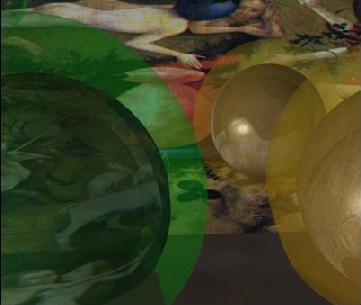
- the Bosch room -



The poetic vision of Deschamps finds its supreme representation in Bosch's most famous work, Garden of Earthly Delights (1505-1510). This triptych shows the master at his best. The central panel, The Garden of Earthly Delights, which is the subject of one of our VR spaces, swarms with the frail nude figures of men and women sporting licentiously in a panoramic landscape that is studded with fantastic growths of a quasisexual form. Bosch seems to show that erotic temptation and sensual gratification as a universal disaster and the human race, as a consequence of original sin succumbing to its naturally base disposition. The subjects are derived in part from three major sources: Medieval bestiaries, Flemish proverbs, and the then very popluar dream and occult books, all mixed in the melting pot of Bosch's astoundingly inventive imagination.
Interpretation:
We have chosen the central panel, Garden of Earthly Delights, for this
part of our VR space. Symbols are scattered plentifully throughout this
panel. One of the most fascinating symbols is that of a couple in a
glass globe which illustrate the proverb: "Good fortune, like glass,
is easily broken." We recreate this glass globe in 3D and recreate,
also in 3D glass globes, what the triptych as a whole represents;
first, the false paradise of the world between Eden and Hell, second,
the secrets of alchemy and their allegorical meanings. The user is able
to enter the glass globes which reproduce the movement of the heavenly
bodies. As the user navigates from one globe to the next, the walls
gradually move backwards to reveal various globes. A fragment from
Wagner's opera , Gotterdammerung, is used to illustrate the overall
allegory of the painting.
sources: 13
